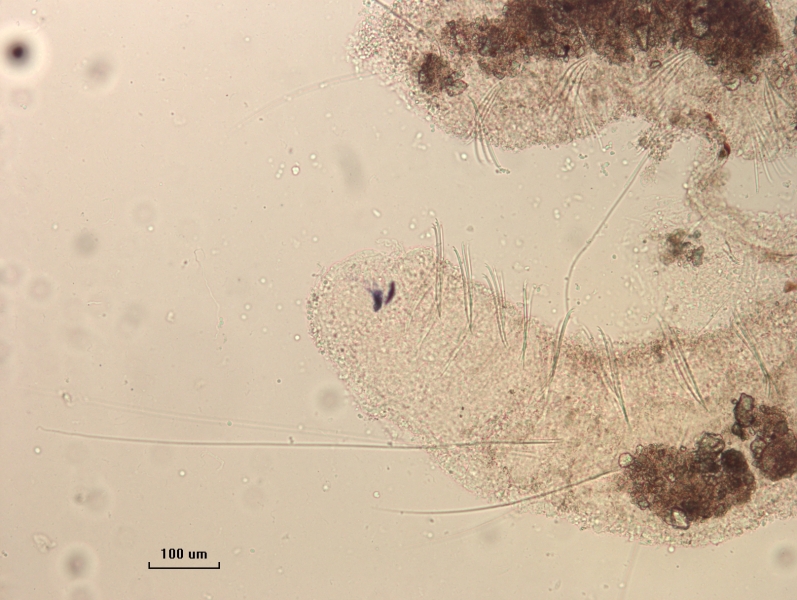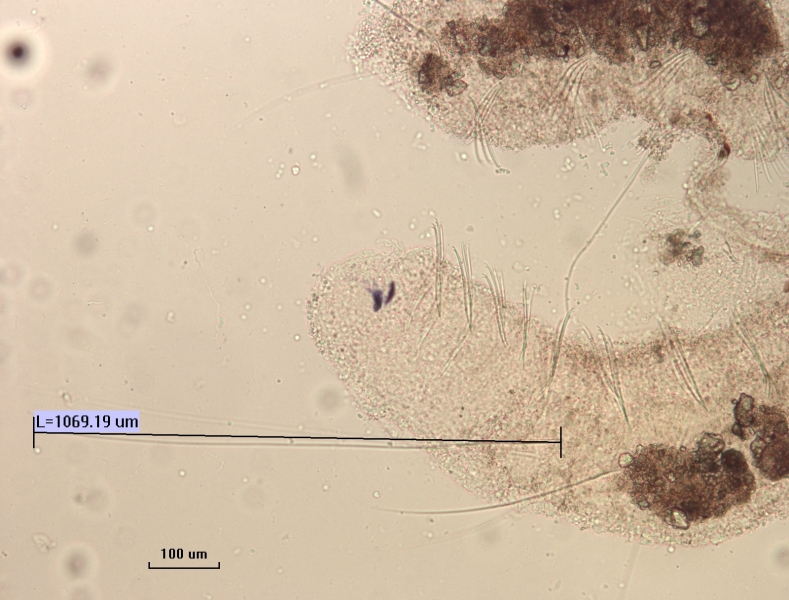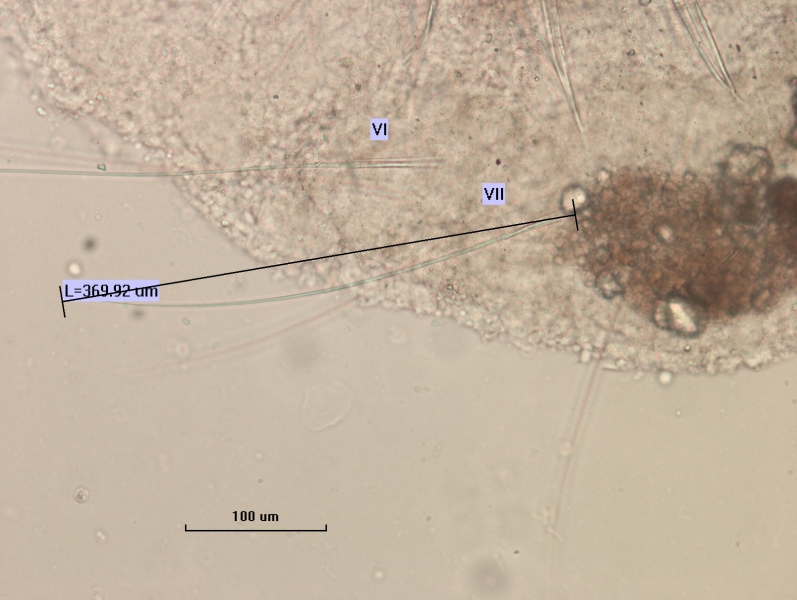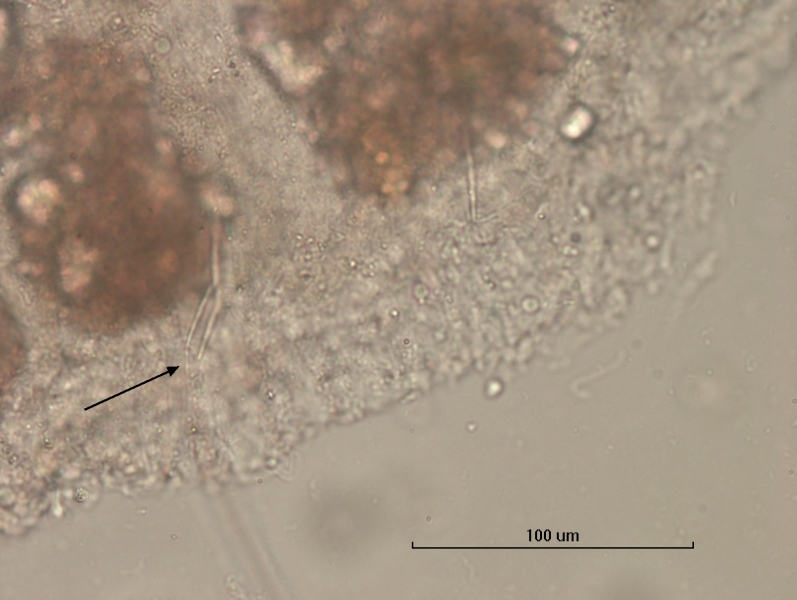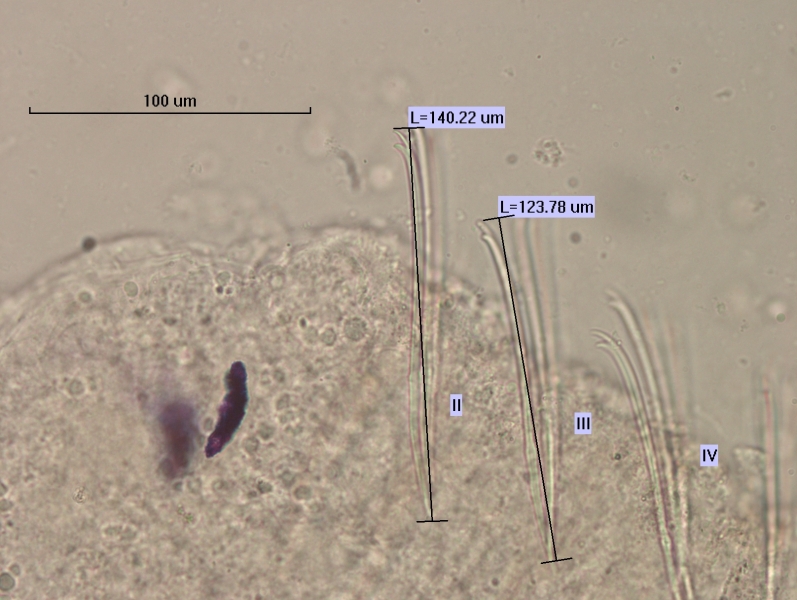Slavina appendiculata
Taxa description
Slavina appendiculata (d’Udekem, 1855) is a freshwater oligochaete worm that is uncommon in the Great Lakes. It is a naidid worm with dorsal bundles beginning in VI and ventral bundles beginning in II, hair chaetae in the dorsal bundles, and without a proboscis. Dorsal bundles contain hair chaetae and 1–2 straight needle chaetae with very narrow distal ends with distended tips; in VI, there 1–3 elongated hairs that are about twice as long as the rest, while all other bundles have 1–2 shorter hairs. Ventral bundles contain 2–5 chaetae with the upper tooth longer and a little thinner than the lower. The ventral chaetae in II are a little longer than the rest, and II–V are thinner than the others. There are eyes present, and the body is papillate with attached foreign matter.
Distinguishing features
S. appendiculata is identified mainly by the elongate hair chaetae in VI, eyes, and papillate body wall with foreign matter attached. The dorsal chaetae are simple-pointed with narrow, hair-like ends with distended tips, and the ventral chaetae have the upper tooth a little longer and thinner than the lower, with II longer and the anterior ventrals thinner than posteriorly. If the elongate hairs have broken or been shed, the papillate body wall, dorsal needles, and ventral chaetae should be enough to identify.
Habitat
Lake occurrence
Lakes Erie, Huron, Michigan, and Ontario.
Similar species
The features of S. appendiculata are very distinctive, so there isn’t a high likelihood of confusing this species with another worm. However, if the elongate chaetae are missing from VI and one is relying on the shape of the dorsal needles, there could be some confusion with Nais pseudobtusa. N. pseudobtusa has 1–3 hair chaetae in every bundle starting in VI, but none are elongated. The needles have long, thin distal ends with no distention at the tip. The ventral chaetae all have the upper tooth longer than the lower, and the anterior chaetae are longer and thinner than the rest, but the shape may be more different than the difference in anterior and posterior ventral chaetae in S. appendiculata. There may or may not be eyes, and the body wall is not papillate. N. pseudobtusa is rarer (St. Marys River) and hasn’t been found in our samples before.
Due to the foreign matter on the body wall, it could be confused with Spirosperma whole worms, or fragments due to the small size. While S. appendiculata does have papillae, the papillae are not as regularly distributed as Spirosperma ferox or as opaque as Spirosperma nikolskyi. There are not finger-like projections in rings like Quistadrilus multisetosus. These are all tubifid worms, while S. appendiculata is a naidid worm. Care should be taken when sorting or examining fragments to ensure that S. appendiculata isn’t confused with fragments of these tubificid worms, so look for eyes, dorsal chaetae starting in VI, sparse extremely long hairs, and if mounted, the needle chaetae with distended tips.
Relative size
S. appendiculata is a small freshwater oligochaete.
Does it have a barcode reference from the Great Lakes?
No, this species does not yet have a barcode reference from the Great Lakes.
References
Kathman, R.D., and R.O. Brinkhurst. 1998. Guide to Freshwater Oligochaetes of North America. pp. 78–79, 38, 40, 80, 82–85, 178–183.
Hiltunen, J.K., and D.J. Klemm. 1980. A Guide to the Naididae (Annelida: Clitellata: Oligochaeta) of North America. pp. 19, 26, 35, 52.


